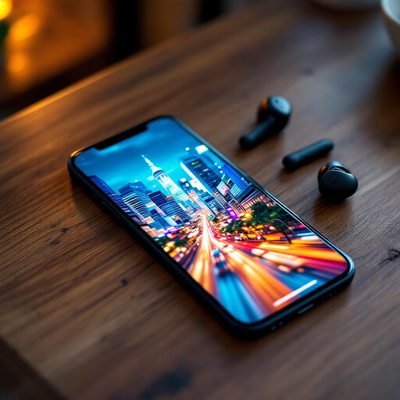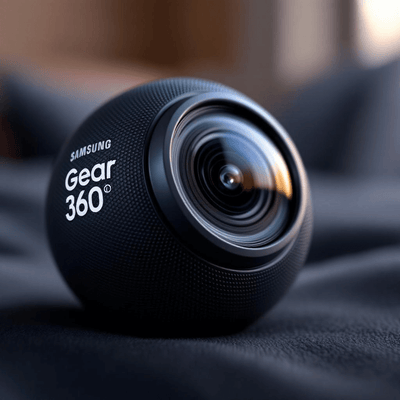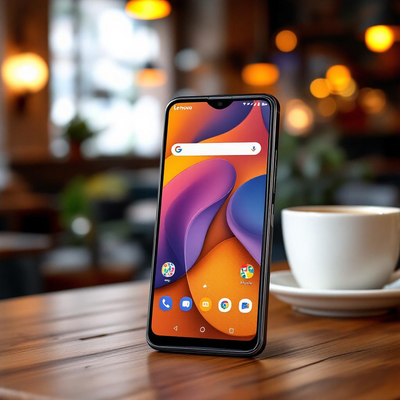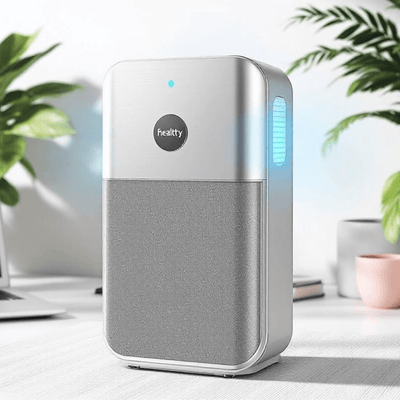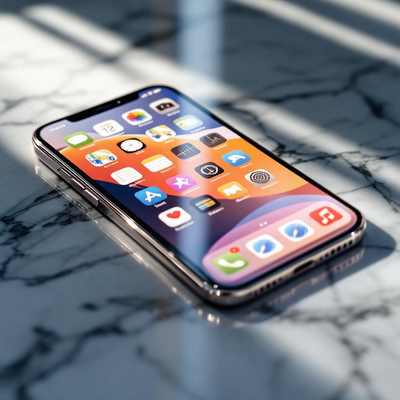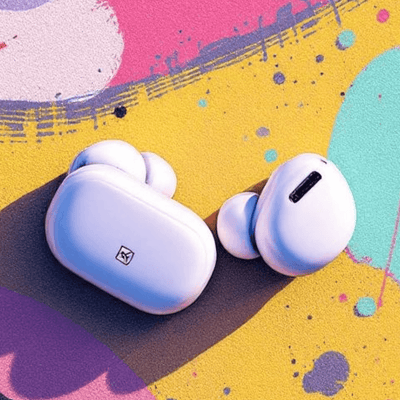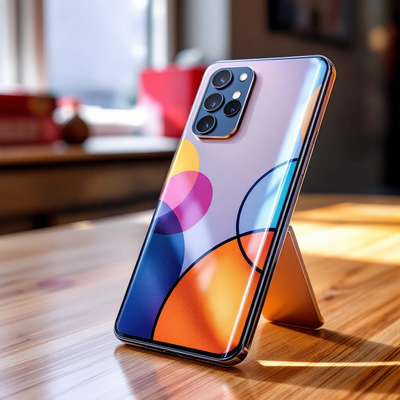Products
- Technology: GSM / CDMA / HSPA / EVDO / LTE
- Dimensions: 142.4 x 69.6 x 7.9 mm
- Weight: 152 g
- Display: Super AMOLED 5.1 inches
- Resolution: 1440 x 2560
- OS: Android 6.0 (Marshmallow)
- Chipset: Exynos 8890
- CPU: Quad-core
- Internal: 32 GB, 4 GB RAM
- Camera: 112 MP - 5 MP
- Technology: GSM / CDMA / HSPA / EVDO / LTE
- Dimensions: 142.4 x 69.6 x 7.9 mm
- Weight: 152 g
- Display: Super AMOLED 5.1 inches
- Resolution: 1440 x 2560
- OS: Android 6.0 (Marshmallow)
- Chipset: Exynos 8890
- CPU: Quad-core
- Internal: 32 GB, 4 GB RAM
- Camera: 112 MP - 5 MP
- Technology: GSM / HSPA / LTE
- Dimensions: 212.8 x 125.6 x 6.6 mm
- Weight: 298 g
- Display: Super AMOLED 8.4 inches
- Resolution: 1600 x 2560
- OS: Android OS, v4.4.2 (KitKat)
- Chipset: Snapdragon 800
- CPU: Quad-core 2.3 GHz
- Internal: 16/32 GB, 3 GB RAM
- Camera: 8 MP - 2.1 MP
Ever since the 2011 unveiling of the Galaxy Tab 7.7 we've been waiting for the next generation of Super AMOLED tablets. Three years later they have arrived - the Samsung Galaxy Tab S duo comes in 10.5" and 8.4" sizes and like the Tab 7.7 before them, they are stunningly thin.
Separate from the Galaxy Tab and Galaxy Note lines, the Galaxy Tab S tablets still share a lot with them. The powerful hardware platform, combined with proprietary TouchWiz features like Multi Window, instantly put the two at the forefront of functionality. Just look at that specs sheet.
- Technology: GSM / HSPA / LTE
- Dimensions: 212.8 x 125.6 x 6.6 mm
- Weight: 298 g
- Display: Super AMOLED 8.4 inches
- Resolution: 1600 x 2560
- OS: Android OS, v4.4.2 (KitKat)
- Chipset: Snapdragon 800
- CPU: Quad-core 2.3 GHz
- Internal: 16/32 GB, 3 GB RAM
- Camera: 8 MP - 2.1 MP
Ever since the 2011 unveiling of the Galaxy Tab 7.7 we've been waiting for the next generation of Super AMOLED tablets. Three years later they have arrived - the Samsung Galaxy Tab S duo comes in 10.5" and 8.4" sizes and like the Tab 7.7 before them, they are stunningly thin.
Separate from the Galaxy Tab and Galaxy Note lines, the Galaxy Tab S tablets still share a lot with them. The powerful hardware platform, combined with proprietary TouchWiz features like Multi Window, instantly put the two at the forefront of functionality. Just look at that specs sheet.
- Connections: USB 2.0, USB 3.0
- Controls: Onboard touchpad, Bluetooth controllers
- Hardware Platform: Android
- Headset Type: Mobile
- Resolution: 2,560 by 1,440
- Sensors: Motion, presence
- Platform: Samsung Gear VR powered by Oculus
- Supported: Note5, Note7, S6, S6 Edge, S6 Edge+, S7, S7 Edge
- Connections: USB 2.0, USB 3.0
- Controls: Onboard touchpad, Bluetooth controllers
- Hardware Platform: Android
- Headset Type: Mobile
- Resolution: 2,560 by 1,440
- Sensors: Motion, presence
- Platform: Samsung Gear VR powered by Oculus
- Supported: Note5, Note7, S6, S6 Edge, S6 Edge+, S7, S7 Edge
- Technology: No cellular connectivity
- Dimensions: 49 x 46 x 12.9 mm
- Weight: 63 g
- Display: Super AMOLED 1.3 inches
- OS: Tizen
- Chipset: Exynos 7270
- CPU: Dual-core 1.0 GHz
- Chipset: Exynos 7270
- Internal: 4 GB, 768 MB RAM
- COMMS: Wi-Fi 802.11 b/g/n
The wearable market has been expanding rapidly these last couple of years and things are only looking up. This is not the first time tech has tried to slip onto user's wrists, but this time around it seems both the business and consumer sides are finally ready. Wearables, and smartwatches, in particular, are really starting to mature.
However, there is also another take on this development. One that rings equally true. After a massive boom of new offers and ideas, it appears many major players are now dialing back their efforts and investments in this segment. Some OEMs, like Huawei, have even stated clearly that their current mindset is to wait things out and see where the market goes next.
Of course, there will always be the occasional release, like the Asus ZenWatch 3, but it is a fact that most Google team players, with a history in the wearable niche, like Motorola or LG, appear to be keeping a low profile lately. But thankfully, outside the arguably confining realm of Android Wear, innovation is still booming.
Enter Samsung. Just like Apple, the Korean giant has chosen a more or less proprietary development path for its wearable offers and is working hard to reap the potential benefits of being the different one, the alternative, if you will. There are few other manufacturers with such a rich portfolio of past products in the smartwatch realm, so it is hardly surprising that the Gear S3 stands out amid a growing crowd of wearables and has already amassed a lot of attention.The Samsung Gear S3 is available in two distinct editions - the Gear S3 Frontier (the one we have the pleasure of reviewing) and the S3 classic. The Frontier is the sportier of the two with its rugged, outdoorsy type of design, while the S3 classic comes with a leather band and is perhaps more suitable for a business setting. Only the Frontier model, however, has a version with an LTE data connectivity for now. We'd say that both are stylish enough for a formal occasion and would do just as good as a sports accessory. Their looks aside, the S3 Frontier and the S3 classic are identical when it comes to the hardware ticking under the hood.
- Technology: No cellular connectivity
- Dimensions: 49 x 46 x 12.9 mm
- Weight: 63 g
- Display: Super AMOLED 1.3 inches
- OS: Tizen
- Chipset: Exynos 7270
- CPU: Dual-core 1.0 GHz
- Chipset: Exynos 7270
- Internal: 4 GB, 768 MB RAM
- COMMS: Wi-Fi 802.11 b/g/n
The wearable market has been expanding rapidly these last couple of years and things are only looking up. This is not the first time tech has tried to slip onto user's wrists, but this time around it seems both the business and consumer sides are finally ready. Wearables, and smartwatches, in particular, are really starting to mature.
However, there is also another take on this development. One that rings equally true. After a massive boom of new offers and ideas, it appears many major players are now dialing back their efforts and investments in this segment. Some OEMs, like Huawei, have even stated clearly that their current mindset is to wait things out and see where the market goes next.
Of course, there will always be the occasional release, like the Asus ZenWatch 3, but it is a fact that most Google team players, with a history in the wearable niche, like Motorola or LG, appear to be keeping a low profile lately. But thankfully, outside the arguably confining realm of Android Wear, innovation is still booming.
Enter Samsung. Just like Apple, the Korean giant has chosen a more or less proprietary development path for its wearable offers and is working hard to reap the potential benefits of being the different one, the alternative, if you will. There are few other manufacturers with such a rich portfolio of past products in the smartwatch realm, so it is hardly surprising that the Gear S3 stands out amid a growing crowd of wearables and has already amassed a lot of attention.The Samsung Gear S3 is available in two distinct editions - the Gear S3 Frontier (the one we have the pleasure of reviewing) and the S3 classic. The Frontier is the sportier of the two with its rugged, outdoorsy type of design, while the S3 classic comes with a leather band and is perhaps more suitable for a business setting. Only the Frontier model, however, has a version with an LTE data connectivity for now. We'd say that both are stylish enough for a formal occasion and would do just as good as a sports accessory. Their looks aside, the S3 Frontier and the S3 classic are identical when it comes to the hardware ticking under the hood.
- Resolution: 10.20 Megapixels
- Sensor size: APS-C
- Kit Lens: 3.88x zoom 18-70mm
- Viewfinder: Optical / LCD
- ISO: 100 - 3200
- Shutter: 1/4000 - 30 seconds
- Dimensions: 133 x 95 x 71 mm
- Weight: 625 g
- Resolution: 10.20 Megapixels
- Sensor size: APS-C
- Kit Lens: 3.88x zoom 18-70mm
- Viewfinder: Optical / LCD
- ISO: 100 - 3200
- Shutter: 1/4000 - 30 seconds
- Dimensions: 133 x 95 x 71 mm
- Weight: 625 g
- Technology: GSM / HSPA / LTE
- Dimensions: 146 x 72 x 8.1 mm
- Weight: 161 g
- Display: IPS LCD 5.2 inches
- Resolution: 1080 x 1920
- OS: Android OS, v6.0.1 (Marshmallow)
- Chipset: Snapdragon 820
- CPU: Quad-core
- Internal: 32/64 GB
- Camera: 23 MP, f/2.0 - 13 MP, f/2.0
Sony's latest flagship, the Xperia Z6 comes with refined design, improved camera, and a due update in specs. Wait, back up a little there - it's actually called the Xperia XZ this time around but, yeah, the rest of that is true.
When Sony announced the new X-series, some suggested that the Xperia X Performance was meant to take on the likes of the Galaxy S7's and HTC 10's, but we knew that couldn't be the case. Okay, 'suspected' might be more accurate there. Obviously, now we all know that the Xperia XZ is Sony's top-dog for this season, and the Z in its name quickly reveals its ancestry.
Indeed, the XZ has a lot in common with the Z5. The display, for one, is the same size and resolution as the last generation - not necessarily a bad thing, but the XZ also comes with 3GB of RAM - modern-day flagships will crack a condescending smile seeing that in the spec sheet.
No one will laugh at the rest of it, though - top-of-the-line Snapdragon 820 chipset, 23MP camera with a trio of focusing technologies and 4K video recording (one could think the Z is required for that, had it not been for the M5), high-res 13MP front camera, Type-C connectivity, fingerprint reader, IP68 rating, stereo speakers - name one thing missing.
- Technology: GSM / HSPA / LTE
- Dimensions: 146 x 72 x 8.1 mm
- Weight: 161 g
- Display: IPS LCD 5.2 inches
- Resolution: 1080 x 1920
- OS: Android OS, v6.0.1 (Marshmallow)
- Chipset: Snapdragon 820
- CPU: Quad-core
- Internal: 32/64 GB
- Camera: 23 MP, f/2.0 - 13 MP, f/2.0
Sony's latest flagship, the Xperia Z6 comes with refined design, improved camera, and a due update in specs. Wait, back up a little there - it's actually called the Xperia XZ this time around but, yeah, the rest of that is true.
When Sony announced the new X-series, some suggested that the Xperia X Performance was meant to take on the likes of the Galaxy S7's and HTC 10's, but we knew that couldn't be the case. Okay, 'suspected' might be more accurate there. Obviously, now we all know that the Xperia XZ is Sony's top-dog for this season, and the Z in its name quickly reveals its ancestry.
Indeed, the XZ has a lot in common with the Z5. The display, for one, is the same size and resolution as the last generation - not necessarily a bad thing, but the XZ also comes with 3GB of RAM - modern-day flagships will crack a condescending smile seeing that in the spec sheet.
No one will laugh at the rest of it, though - top-of-the-line Snapdragon 820 chipset, 23MP camera with a trio of focusing technologies and 4K video recording (one could think the Z is required for that, had it not been for the M5), high-res 13MP front camera, Type-C connectivity, fingerprint reader, IP68 rating, stereo speakers - name one thing missing.
- Technology: GSM / HSPA / LTE
- Dimensions: 254 x 167 x 6.1 mm
- Weight: 393 g
- Display: IPS LCD 10.1 inches
- Resolution: 2560 x 1600
- OS: Android OS, v5.0 (Lollipop)
- Chipset: Snapdragon 810
- CPU: Octa-core
- Internal: 32 GB, 3 GB RAM
- Camera: 8.1 MP - 5.1 MP
The Sony Xperia Z4 Tablet faces the daunting task of flying the Z4 banner, when the Xperia Z4 smartphone is just an incremental update limited to the Japanese market. The 10.1-inch tablet seems up for the task however with contemporary specs, attractive styling and razor-thin profile.
The Xperia Z4 Tablet builds on the virtues of the Z2 Tablet from a year ago and the improvements are much easier to spot than in the Xperia smartphone range where Sony's twice-a-year release cycle has meant more gradual evolution.
We weren't particularly satisfied with the low 224ppi of the predecessor, rather thin even by last year's standards and we're happy to note that the tablet's display resolution has been brought up to date and is now 2,560 x 1,600 pixels.
Sony's design language has remained unchanged for a while, and while it may be getting a bit tired, it's stylish nonetheless. A few excess millimeters have been trimmed off the footprint, while thickness has been brought down to match the Apple iPad Air 2 at 6.1mm. And perhaps most importantly, an IP68 certification means you can submerge it in water for up to 30min and 1.5m in depth, without fearing for its life.
Most impressively, the tablet weighs just 393g, a good 10% lighter than both the predecessor and the Cupertino rival. Meanwhile, battery capacity hasn't been sacrificed and has remained at 6,000mAh, but will that be enough to power 80% percent more pixels and more capable chipset?
Speaking of chipsets, a whole year warrants an improvement in the innards and the Snapdragon 810 has replaced the S801 of the Xperia Z2 Tablet. We're only left to hope that Sony has managed to leverage the large surface area to benefit the heat dissipation and we finally the Snapdragon live up to its potential.
We have the LTE version of the tablet which comes with the added benefit of cellular connectivity. There's also a WI-Fi only model, but our findings should apply equally well to that one too. For the sake of simplicity we'll drop the LTE abbreviation for the rest of this review.
- Technology: GSM / HSPA / LTE
- Dimensions: 254 x 167 x 6.1 mm
- Weight: 393 g
- Display: IPS LCD 10.1 inches
- Resolution: 2560 x 1600
- OS: Android OS, v5.0 (Lollipop)
- Chipset: Snapdragon 810
- CPU: Octa-core
- Internal: 32 GB, 3 GB RAM
- Camera: 8.1 MP - 5.1 MP
The Sony Xperia Z4 Tablet faces the daunting task of flying the Z4 banner, when the Xperia Z4 smartphone is just an incremental update limited to the Japanese market. The 10.1-inch tablet seems up for the task however with contemporary specs, attractive styling and razor-thin profile.
The Xperia Z4 Tablet builds on the virtues of the Z2 Tablet from a year ago and the improvements are much easier to spot than in the Xperia smartphone range where Sony's twice-a-year release cycle has meant more gradual evolution.
We weren't particularly satisfied with the low 224ppi of the predecessor, rather thin even by last year's standards and we're happy to note that the tablet's display resolution has been brought up to date and is now 2,560 x 1,600 pixels.
Sony's design language has remained unchanged for a while, and while it may be getting a bit tired, it's stylish nonetheless. A few excess millimeters have been trimmed off the footprint, while thickness has been brought down to match the Apple iPad Air 2 at 6.1mm. And perhaps most importantly, an IP68 certification means you can submerge it in water for up to 30min and 1.5m in depth, without fearing for its life.
Most impressively, the tablet weighs just 393g, a good 10% lighter than both the predecessor and the Cupertino rival. Meanwhile, battery capacity hasn't been sacrificed and has remained at 6,000mAh, but will that be enough to power 80% percent more pixels and more capable chipset?
Speaking of chipsets, a whole year warrants an improvement in the innards and the Snapdragon 810 has replaced the S801 of the Xperia Z2 Tablet. We're only left to hope that Sony has managed to leverage the large surface area to benefit the heat dissipation and we finally the Snapdragon live up to its potential.
We have the LTE version of the tablet which comes with the added benefit of cellular connectivity. There's also a WI-Fi only model, but our findings should apply equally well to that one too. For the sake of simplicity we'll drop the LTE abbreviation for the rest of this review.
- Read Speed: up to 130 MB/s
- Generation: USB 3.0
- Dimensions: 13.21 mm x 42.42 mm x 6.60 mm
- Operating temperature: 32° - 113°
- Storage temperature: 0° - 158°
- 5-year limited warranty
- Read Speed: up to 130 MB/s
- Generation: USB 3.0
- Dimensions: 13.21 mm x 42.42 mm x 6.60 mm
- Operating temperature: 32° - 113°
- Storage temperature: 0° - 158°
- 5-year limited warranty
- Technology: GSM / HSPA / LTE
- Dimensions: 153.8 x 75.5 x 7.6 mm
- Weight: 154 g
- Display: IPS LCD 5.5 inches
- Resolution: 720 x 1280
- OS: Android OS, v6.0 (Marshmallow)
- Chipset: Octa-core
- CPU: Octa-core
- Internal: 32 GB, 4 GB RAM
- Camera: 13MB - 20 MP
- Technology: GSM / HSPA / LTE
- Dimensions: 153.8 x 75.5 x 7.6 mm
- Weight: 154 g
- Display: IPS LCD 5.5 inches
- Resolution: 720 x 1280
- OS: Android OS, v6.0 (Marshmallow)
- Chipset: Octa-core
- CPU: Octa-core
- Internal: 32 GB, 4 GB RAM
- Camera: 13MB - 20 MP
- Technology: No cellular connectivity
- Dimensions: 46 x 46 x 11.4 mm
- Weight: IPS LCD g
- Display: AMOLED 1.56 inches
- Resolution: 360 x 330
- OS: Android Wear OS
- Chipset: Snapdragon 400
- CPU: Quad-core 1.2 GHz Cortex-A7
- Internal: 4 GB, 512 MB RAM
- Camera: No
A year after the first generation took the smartwatch world by storm with its timeless looks, it is time for the new Moto 360 to step up to the plate. The new iteration of Motorola's acclaimed Android Wear device arrives on the market with revamped design, highly customizable body in two sizes, a version designed for ladies, and a brand new Sport model.
Of course, in addition to new looks and levels of customizability, the new Moto 360 also features improved hardware over the first generation. The newcomer packs a more powerful Qualcomm Snapdragon 400 solution, sharper display, and bigger battery. Take a look at its key features below.
- Technology: No cellular connectivity
- Dimensions: 46 x 46 x 11.4 mm
- Weight: IPS LCD g
- Display: AMOLED 1.56 inches
- Resolution: 360 x 330
- OS: Android Wear OS
- Chipset: Snapdragon 400
- CPU: Quad-core 1.2 GHz Cortex-A7
- Internal: 4 GB, 512 MB RAM
- Camera: No
A year after the first generation took the smartwatch world by storm with its timeless looks, it is time for the new Moto 360 to step up to the plate. The new iteration of Motorola's acclaimed Android Wear device arrives on the market with revamped design, highly customizable body in two sizes, a version designed for ladies, and a brand new Sport model.
Of course, in addition to new looks and levels of customizability, the new Moto 360 also features improved hardware over the first generation. The newcomer packs a more powerful Qualcomm Snapdragon 400 solution, sharper display, and bigger battery. Take a look at its key features below.
- Dimensions: 139mm x 288mm x 21mm
- Weight: 312 g
- 36-month battery life
- Adjustable keyboard height
- Spill-resistant design
- 2.4GHz wireless (10 meters)
- Nano USB receiver
- 3-year Limited hardware warranty
- Dimensions: 139mm x 288mm x 21mm
- Weight: 312 g
- 36-month battery life
- Adjustable keyboard height
- Spill-resistant design
- 2.4GHz wireless (10 meters)
- Nano USB receiver
- 3-year Limited hardware warranty
- Technology: GSM / HSPA / LTE
- Dimensions: 144.6 x 69.2 x 7.3 mm
- Weight: 129 g
- Display: IPS LCD 5.15 inches
- Resolution: 1080 x 1920
- OS: Android OS, v6.0 (Marshmallow)
- Chipset: Snapdragon 820
- CPU: Quad-core
- Internal: 32GB/64GB/128GB
- Camera: 16 MP, f/2.0 - 4 MP, f/2.0
It's been a while since we met the last of the Mi kind. Even though the Xiaomi Mi 4 went on sale back in the summer of 2014, it succeeded in staying relevant for over 20 months and surpassed the lifespan of many competitors. Xiaomi surely took the time to make the Mi 5 worthy of the flagship series name.
The Mi 5 was the first Xiaomi phone to be unveiled under the massive spotlight of the world's biggest mobile expo - the MWC in Barcelona. And with its stunning looks and capable performance, the Mi 5 deserved nothing less.
The Xiaomi Mi 5 is instantly likeable - the new flagship comes with unbelievably thin bezels, a sharp profile, a curved back and a lightweight body - all adding to one of the most impressive exteriors a modern smartphones can hope for.
Then you learn that inside there is the latest Snapdragon 820 chipset, a new 16MP camera with 4-axis optical stabilization and yet no camera hump, generous storage options, rich connectivity options, and a beefy battery. How about that?
- Technology: GSM / HSPA / LTE
- Dimensions: 144.6 x 69.2 x 7.3 mm
- Weight: 129 g
- Display: IPS LCD 5.15 inches
- Resolution: 1080 x 1920
- OS: Android OS, v6.0 (Marshmallow)
- Chipset: Snapdragon 820
- CPU: Quad-core
- Internal: 32GB/64GB/128GB
- Camera: 16 MP, f/2.0 - 4 MP, f/2.0
It's been a while since we met the last of the Mi kind. Even though the Xiaomi Mi 4 went on sale back in the summer of 2014, it succeeded in staying relevant for over 20 months and surpassed the lifespan of many competitors. Xiaomi surely took the time to make the Mi 5 worthy of the flagship series name.
The Mi 5 was the first Xiaomi phone to be unveiled under the massive spotlight of the world's biggest mobile expo - the MWC in Barcelona. And with its stunning looks and capable performance, the Mi 5 deserved nothing less.
The Xiaomi Mi 5 is instantly likeable - the new flagship comes with unbelievably thin bezels, a sharp profile, a curved back and a lightweight body - all adding to one of the most impressive exteriors a modern smartphones can hope for.
Then you learn that inside there is the latest Snapdragon 820 chipset, a new 16MP camera with 4-axis optical stabilization and yet no camera hump, generous storage options, rich connectivity options, and a beefy battery. How about that?


